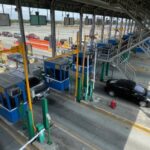Hyperinflation is a phrase used to describe an economy’s rapid, excessive, and out-of-control price increases. While inflation is a measure of the rate at which prices for goods and services rise, hyperinflation is when prices rise at a rate of more than 50% each month.
Although hyperinflation is a rare occurrence in developed economies, it has occurred in countries such as China, Germany, Russia, Hungary, and Argentina on numerous occasions throughout history.
When prices grow by more than 50% each month over a period of time, it is called hyperinflation. Inflation in the United States, as measured by the Consumer Price Index (CPI), has been around 2% each year since 2011, according to the Bureau of Labor Statistics. The CPI is just a price index for a specific basket of goods and services.
Due to increasing prices, hyperinflation causes consumers and businesses to require more money to purchase goods.
Normal inflation is measured in monthly price increases, whereas hyperinflation is measured in exponential daily price increases that can range from 5% to 10% per day. When the inflation rate hits 50% for a month, it is called hyperinflation.
Hyperinflation: An Overview
Consider the cost of food shopping increasing from $500 per week to $750 per week the following month, then to $1,125 per week the following month, and so on. When wages in an economy don’t keep up with inflation, people’s standards of living fall because they can’t afford to pay for their fundamental demands and living expenses.
Hyperinflation can have a variety of economic implications. People may stockpile items, even perishables like food, in response to increased costs, resulting in food shortages.
When prices grow too quickly, cash and bank deposits lose value or become worthless since the money has considerably less purchasing power. The financial status of consumers deteriorates, which might lead to bankruptcy.
People may also refuse to deposit money in financial institutions, causing banks and lenders to fail. Tax revenues may also plummet if consumers and businesses can’t pay, which might result in governments failing to deliver fundamental services.
What Causes Hyperinflation?
Although hyperinflation can be caused by a variety of factors, the following are some of the most typical causes.
Excessive Money Supply
In periods of severe economic turbulence and distress, hyperinflation has occurred. A depression is a prolonged period of a contracting economy, meaning the growth rate is negative.
A recession is defined as a prolonged period of negative growth lasting longer than two quarters or six months. A depression, on the other hand, can endure for years and is characterized by exceptionally high unemployment, corporate and personal bankruptcies, lower productive output, and limited lending or credit availability.
The central bank’s response to a depression is usually an increase in the money supply. The additional funds are intended to entice banks to lend to consumers and businesses in order to stimulate spending and investment.
Loss of Confidence in the Economy or Monetary System
Hyperinflation sometimes develops during times of war when people lose faith in a country’s currency and the central bank’s capacity to preserve its value in the aftermath.
Companies selling goods both inside and outside the country want a risk premium in exchange for taking their currency, which they do by raising their prices. As a result, hyperinflation or exponential price increases may occur.
Citizens may lose faith in the worth of their country’s money if a government is not properly governed. People begin to hoard commodities and items that have value when the money is regarded to have little or no worth.
Basic items, such as food and gasoline, become scarce as prices rise, driving prices spiraling upward. In order to stabilize prices and provide liquidity, the government is compelled to print even more money, exacerbating the crisis.
During times of economic crisis and war, a lack of trust is sometimes reflected in investment withdrawals from the country.
Because investors are selling their country’s capital in exchange for another country’s investments, the country’s currency value depreciates when these outflows occur. Capital controls, or prohibitions on moving money out of the country, are frequently imposed by the central bank.
Example of Hyperinflation
In the 1990s, the former Yugoslavia saw one of the most catastrophic and long-lasting periods of hyperinflation. On the verge of disintegration, the country was already experiencing annual inflation rates of more than 76 percent. Slobodan Milosevic, the then-leader of Serbia, was found to have been plundering the national budget by having the Serbian state bank issue $1.4 billion in loans to his cronies in 1991.
Because of the theft, the government’s central bank was compelled to issue an excessive amount of money in order to meet its financial obligations. Hyperinflation swiftly engulfed the economy, wiping out what little wealth the country had left and forcing its citizens to barter for products.
Each day, the rate of inflation nearly doubled, eventually reaching an incomprehensible 313 million percent every month. As the economy collapsed, the central bank was compelled to print additional money just to keep the government afloat.
Food shortages resulted as the government soon assumed control of production and pay. Incomes plummeted by more than half, and manufacturing came to a halt. The government eventually switched to the German mark as its currency, which helped to stabilize the economy.
Bottomline
One of the most misunderstood aspects of economics is hyperinflation. In fact, looking for uncertainty over the definition of hyperinflation is one of the quickest ways to identify if an economist is ignorant or dishonest.
Many people refer to hyperinflation as simply inflation with a high number in front of it. In reality, they are as dissimilar as stock prices rising due to a short squeeze and stock prices rising due to good news.
There is no understanding of how markets react to news that can help you understand a short squeeze, and there is no analysis of inflation that can help you comprehend hyperinflation other than pointing to an initial threshold event.




